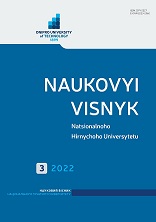

 | Наукова періодика України | 
| Naukovyi visnyk Natsionalnoho Hirnychoho Universytetu |
Mekti Z. Industrial application of blast furnace slag as a substitute for sand at the cement plant of Hadjar-Soud (Algeria) / Z. Mekti, M. Bounouala, M. Chettibi, A. Boutemedjet // Науковий вісник Національного гірничого університету. - 2018. - № 1. - С. 43-50. - Режим доступу: http://nbuv.gov.ua/UJRN/Nvngu_2018_1_8 Purpose. This study is conducted on the use of industrial waste (blast furnace slag) from the El-Hadjar steel plant located in eastern Algeria. The research aims to understand the behaviour of the addition of Slag as raw material (replacing sand) in the preparation of the mixture before baking in the rotary kiln at the Hadjar-Soud cement plant in Skikda. Methodology. The representative samples taken from the cement plant site are subjected to grinding of the mixture of limestone, slag, clay and iron ore, the material prepared at a grain size of less than <$E 50~mu> is subjected to a physicochemical characterization. The prepared sample is placed in a furnace with a temperature of up to 1450 <^>o Цитованість авторів публікації: Бібліографічний опис для цитування: Mekti Z. Industrial application of blast furnace slag as a substitute for sand at the cement plant of Hadjar-Soud (Algeria) / Z. Mekti, M. Bounouala, M. Chettibi, A. Boutemedjet // Науковий вісник Національного гірничого університету. - 2018. - № 1. - С. 43-50. - Режим доступу: http://nbuv.gov.ua/UJRN/Nvngu_2018_1_8. |
|
|
Всі права захищені © Національна бібліотека України імені В. І. Вернадського |
|||||